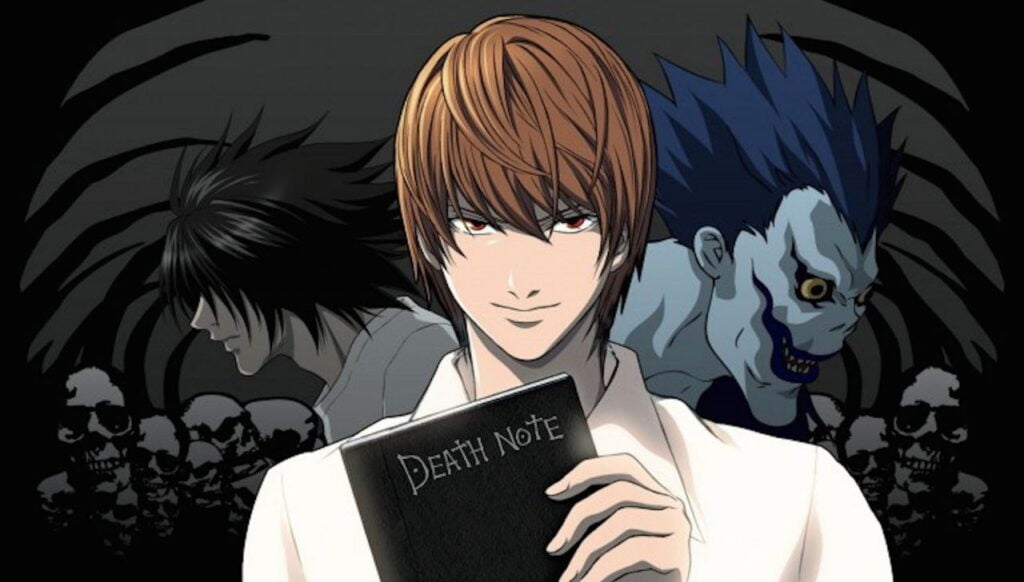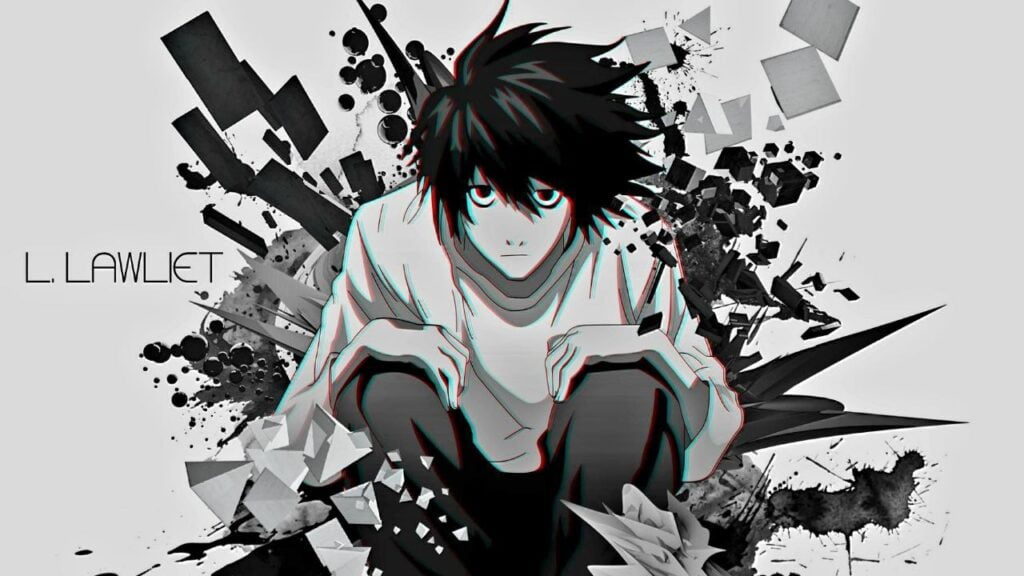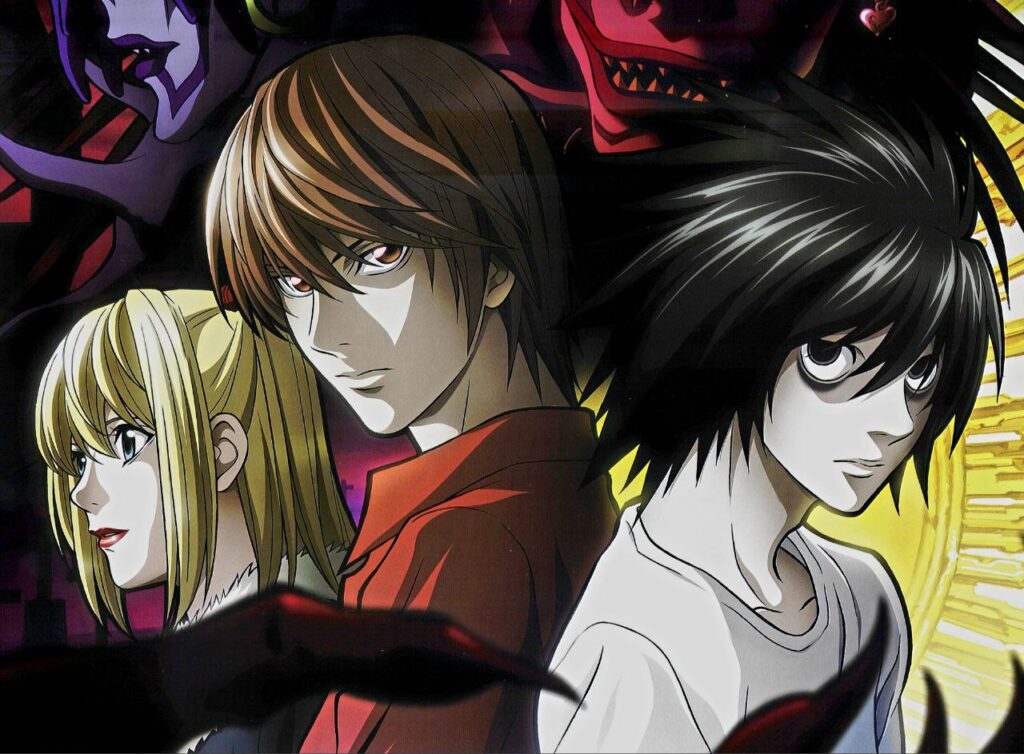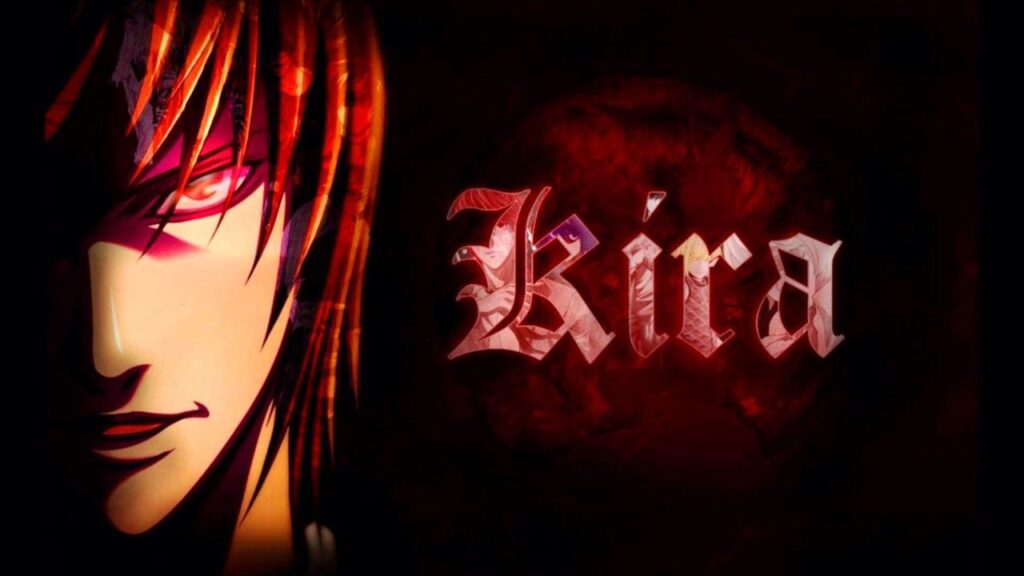
Introduction:
Death Note, a Japanese anime series based on the manga of the same name written by Tsugumi Ohba and illustrated by Takeshi Obata, stands as a cornerstone in the realm of psychological thrillers. Originally serialized in the manga magazine Weekly Shonen Jump from December 1, 2003, to May 15, 2006, Death Note has since gained international acclaim for its intricate plot, compelling characters, and profound exploration of morality and power dynamics.
Plot Overview:
The narrative centers around Light Yagami, a brilliant high school student who stumbles upon a mysterious notebook called the Death Note. The Death Note, dropped by the Shinigami (death god) Ryuk, grants its possessor the power to kill anyone whose name is written in it, provided the writer has the person’s face in mind. Light, disillusioned with the state of the world and craving absolute justice, takes it upon himself to use the Death Note to rid the world of criminals.
As Light’s god-like power grows, the story evolves into a complex cat-and-mouse game with L, a brilliant and enigmatic detective determined to capture Kira, the anonymous killer using the Death Note. The battle of wits between Light and L forms the core of the series, as each character seeks to outsmart the other in a high-stakes game that questions the very nature of justice.
Themes and Morality:
At its core, Death Note delves into profound philosophical and moral questions. The series challenges viewers to contemplate the thin line between justice and vengeance, exploring the consequences of playing god and the morality of taking life for the greater good. Light Yagami’s transformation from a well-intentioned idealist to a power-hungry vigilante blurs the boundaries of morality, making Death Note a thought-provoking exploration of ethical dilemmas.
The Death Note itself becomes a symbol of absolute power and the corrupting influence it can have on even the most virtuous individuals. As Light succumbs to the intoxicating authority of the Death Note, viewers are left to question whether the ends can ever justify the means and whether absolute justice is achievable without compromising one’s own humanity.

Character Development:
The characters in Death Note are meticulously crafted, each with their own unique motivations and moral compass. Light Yagami’s descent into darkness is a psychological journey that captivates audiences, challenging them to empathize with a protagonist turned antagonist. L, on the other hand, embodies the archetype of an eccentric genius detective, offering a stark contrast to Light’s calculated approach.
Ryuk, the Shinigami who drops the Death Note into the human world, serves as a detached observer, adding a layer of supernatural intrigue to the narrative. The dynamics between these characters, their alliances, and conflicts contribute to the intricate storytelling that keeps viewers on the edge of their seats.

Visual and Aesthetic Elements:
Death Note’s visual style, helmed by director Tetsurō Araki and the animation studio Madhouse, is a masterclass in creating an atmosphere that complements the dark themes of the series. The use of shadows, contrasting light, and meticulous attention to detail enhances the overall sense of suspense and psychological tension. The character designs by Takeshi Obata perfectly capture the nuances of each personality, conveying emotions and internal conflicts with striking precision.
The symbolism associated with the Death Note itself, as well as the Shinigami realm, adds layers to the narrative. The eerie and otherworldly aesthetic of the Shinigami world reflects the moral ambiguity and supernatural elements woven into the fabric of Death Note.

Social Commentary:
Beyond its captivating narrative, Death Note offers social commentary on the nature of justice, the role of authority, and the consequences of unchecked power. The series explores how society responds to the emergence of a self-proclaimed god-like figure dispensing justice, raising questions about the pitfalls of blind obedience and the dangers of surrendering individual autonomy for the sake of security.
The media’s portrayal of Kira and the public’s reaction to his actions provide a mirror to real-world discussions on crime, punishment, and the allure of charismatic figures promising radical change. Death Note serves as a cautionary tale about the potential consequences of embracing extreme ideologies in the pursuit of a utopian society.
Legacy and Impact:
Since its debut, Death Note has left an indelible mark on the anime landscape. Its influence can be seen in subsequent psychological thrillers and morally ambiguous narratives that challenge traditional storytelling conventions. The series has inspired spin-offs, live-action adaptations, and a dedicated fanbase that continues to discuss and analyze its themes.
The character of Light Yagami, with his complex moral journey, remains an iconic figure in anime, sparking debates on the nature of justice and the corrupting influence of power. The cat-and-mouse game between Light and L has become a benchmark for intellectual battles within the anime genre.

Conclusion:
Death Note’s enduring popularity is a testament to its ability to captivate audiences with its morally complex narrative, well-developed characters, and thought-provoking themes. The series invites viewers to reflect on the nature of justice, the consequences of absolute power, and the fine line between good and evil. As one of the standout psychological thrillers in the anime realm, Death Note continues to resonate with both new and seasoned fans, leaving an indelible mark on the medium.
FAQ:
Q1: What makes Death Note stand out in the anime world? A1: Death Note stands out for its gripping narrative, intricate characters, and profound exploration of morality and power dynamics. The cat-and-mouse game between Light Yagami and L, along with the moral complexities surrounding the Death Note, sets it apart as a psychological thriller.
Q2: How does Death Note tackle moral dilemmas? A2: Death Note navigates moral dilemmas by presenting a protagonist, Light Yagami, who initially seeks justice but succumbs to the corrupting influence of power. The series questions the thin line between justice and vengeance, prompting viewers to reflect on the consequences of absolute power.
Q3: What role do the characters play in Death Note? A3: The characters in Death Note are meticulously crafted, each with unique motivations. Light Yagami’s transformation from a well-intentioned idealist to a power-hungry vigilante is central to the narrative. L, the eccentric detective, adds depth to the story with his relentless pursuit of Kira (Light).
Q4: How does Death Note use visual elements to enhance the story? A4: The visual style of Death Note, directed by Tetsurō Araki and animated by Madhouse, contributes to the overall atmosphere. The use of shadows, contrasting light, and attention to detail intensify the psychological tension. Takeshi Obata’s character designs capture the nuances of each personality.
Q5: What social commentary does Death Note offer? A5: Death Note provides commentary on justice, authority, and the consequences of unchecked power. It explores how society responds to the emergence of a self-proclaimed god-like figure dispensing justice and raises questions about blind obedience and the dangers of extreme ideologies.
Q6: How has Death Note influenced the anime landscape? A6: Death Note’s impact on the anime landscape is evident in subsequent psychological thrillers and morally ambiguous narratives. The series has inspired spin-offs, live-action adaptations, and discussions on its complex themes, making it a benchmark for intellectual battles in anime.
Q7: Is Death Note suitable for all audiences? A7: Death Note contains mature themes, violence, and psychological intensity. While it appeals to a broad audience, it may not be suitable for younger viewers. Viewer discretion is advised.
Q8: Are there any live-action adaptations of Death Note? A8: Yes, there are live-action adaptations of Death Note, including films and a television series. These adaptations aim to bring the complex narrative and characters to a wider audience.
Q9: How does Death Note leave a lasting impact on its audience? A9: Death Note’s enduring popularity is attributed to its ability to engage viewers with its morally complex narrative, memorable characters, and thought-provoking themes. It leaves a lasting impact by prompting introspection on the nature of justice and power.
Q10: Can Death Note be enjoyed by those new to anime? A10: Yes, Death Note is accessible to both seasoned anime enthusiasts and newcomers. Its compelling storyline, rich character development, and exploration of universal themes make it a captivating experience for a diverse audience.